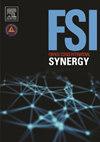Challenges in using massively parallel sequencing technology for forensic DNA analysis in Southeast Asia
Q1 Social Sciences
引用次数: 0
Abstract
Massively parallel sequencing (MPS) has caused a paradigm shift in forensic DNA analysis by enabling simultaneous examination of multiple genetic markers with higher resolution. Despite its growing importance, adoption in the 11 Southeast Asian countries remains limited. This paper reviews MPS implementation in forensic DNA laboratories across the region and discusses key adoption challenges. An online survey with the Asian Forensic Sciences Network – DNA Workgroup (AFSN-DNAWG) received 19 responses from seven countries: Brunei Darussalam, Indonesia, Malaysia, the Philippines, Singapore, Thailand, and Vietnam. Eight respondents are using MPS, while 10 of 11 non-users plan to adopt it within five years. Key challenges for users included limited population data, lack of standardized international nomenclature, and incompatibility with existing national DNA databases, which rely on length polymorphisms of short tandem repeat (STR) markers. Non-users cited limited infrastructure, financial constraints due to lack of government support, and insufficient training in managing sequencing data. To expand MPS use, we recommend a strategy combining effective capillary electrophoresis (CE)-based DNA profiling for routine cases with MPS technology for complex cases; establishment of an MPS-capable forensic DNA laboratory per country; and increased regional collaboration to maximize genomic data use common to mainstream and Indigenous populations, which have histories of trade, migration, and cultural interactions. These steps can provide a practical approach to integrating MPS into forensic databasing and casework across Southeast Asia.
在东南亚使用大规模平行测序技术进行法医DNA分析的挑战
大规模平行测序(MPS)通过能够以更高的分辨率同时检查多个遗传标记,引起了法医DNA分析的范式转变。尽管它越来越重要,但在11个东南亚国家的采用仍然有限。本文回顾了MPS在整个地区法医DNA实验室的实施,并讨论了关键的采用挑战。亚洲法医科学网络-DNA工作组(AFSN-DNAWG)的一项在线调查收到了来自七个国家的19份答复:文莱达鲁萨兰国、印度尼西亚、马来西亚、菲律宾、新加坡、泰国和越南。8位受访者正在使用MPS,而11位非用户中有10位计划在五年内采用MPS。用户面临的主要挑战包括有限的人口数据,缺乏标准化的国际命名法,以及与现有的国家DNA数据库不兼容,这些数据库依赖于短串联重复序列(STR)标记的长度多态性。非使用者指出基础设施有限、缺乏政府支持造成的财政限制以及管理测序数据方面的培训不足。为了扩大MPS的应用,我们建议将常规病例的有效毛细管电泳(CE) DNA分析与复杂病例的MPS技术相结合;每个国家建立一个具备mps能力的法医DNA实验室;加强区域合作,最大限度地利用主流人口和土著人口共有的基因组数据,这些人口有贸易、移民和文化互动的历史。这些步骤可以提供一种切实可行的方法,将公安部纳入整个东南亚的法医数据库和案件工作。
本文章由计算机程序翻译,如有差异,请以英文原文为准。
求助全文
约1分钟内获得全文
求助全文
来源期刊

Forensic Science International: Synergy
Social Sciences-Law
CiteScore
4.90
自引率
0.00%
发文量
75
审稿时长
90 days
 求助内容:
求助内容: 应助结果提醒方式:
应助结果提醒方式:


